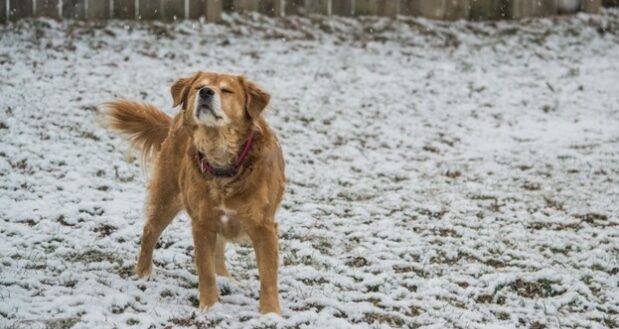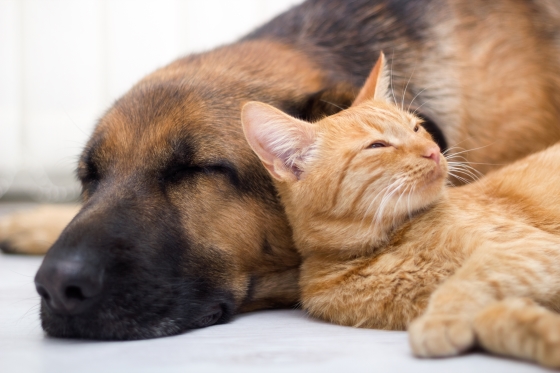Ensuring Winter Wellness: A Guide To Keeping Your Pets Safe
Considering your pets’ unique safety needs during the colder months is vital to keeping them happy and healthy. Overlooking hard weather safety entirely can cost you in the form of unforeseen veterinary bills following a weather-related accident or injury. Check out these simple winter safety tips to help keep your pet safe, happy, and healthy during cold weather.
Cold Weather Essentials for Pets
Importance of proper shelter
For your pets who live outside, warmth and sufficient shelter are critical. Having a heated space where your outdoor pets can warm up and relax prevents them from seeking warmth in potentially dangerous places. Suitable bedding and shelter options are the first defense against cold weather. Waterproof and semi-enclosed bedding can help keep pets dry and warm.
Dressing your pet for winter
Coats, vests, sweaters, and boots are all made to help keep pets warm and dry during winter. Which style is best for your pet largely depends on the type of pet you are dressing, their size, and their coat.
Putting clothes on your pet, especially boots, is just as tricky as it sounds. The best way to get your animal acclimated to wearing winter clothing is to put the clothes on for small increments, slowly increasing the time until your animal is ready to brave the cold in their new cold-weather look!
Nutrition and Hydration
Adjusting your pet’s diet for winter
Your pets have to work harder in winter to maintain their body temperature. More work means more calories burned, which means they need more calories in their diet. Talk to your vet about adjusting your pet’s diet through the colder months.
It is common knowledge that drinking water is essential when the weather is scorching. Did you know proper hydration is just as crucial in freezing weather? Ensuring your pet can access fresh drinking water even as the weather gets bitterly cold is vital to their health and well-being.
Signs of dehydration and malnutrition in pets
Closely monitor your pet’s weight and behavior throughout the winter. Changes in their walk, posture, mood, or appetite can all indicate a more significant underlying issue that may be related to the cold weather.
Paw and Skin Care
Protecting your pet’s paws from ice and salt
You can keep your pet’s paws happy by utilizing pet-friendly salt products for ice. If you take your pets around town during winter, they will likely encounter salt that isn’t pet-friendly while on walks. Cleaning and moisturizing paws after outdoor activities is always a good practice. Boots, though hard to put on pets and harder to keep on, are the best line of defense against pain-inducing salt.
Recognizing and treating dry, itchy skin
Cold weather means drier air, which can dry out our pets’ skin just as much as it dries out our skin. Pet-friendly grooming products and regular care can help your pets avoid weather-related, itchy, and irritated skin. If skin-related issues persist after regular grooming, talk to your veterinarian about treatment and prevention.
Outdoor Safety Measures
Limiting outdoor exposure during extreme weather
Pets exposed to extreme cold or freezing weather for extended periods are at risk of hypothermia and frostbite. Signs and symptoms of frostbite include:
- Shriveled skin that is cold to the touch.
- Icicles around the nose.
- Bluish gray skin that becomes red and puffy.
Establishing safe playtime routines in cold weather helps to avoid these severe conditions. Bundle up and limit time outside when the temperature drops to unsafe levels.
Pet-friendly winter activities
Snow days don’t have to be boring. Creating a stimulating environment during colder days is all it takes! Plenty of challenging, high-energy activities that require a lot of exercise are essential for dogs. You can even enlist your children’s help!
Holiday Hazards and Seasonal Toxins
Identifying common winter dangers in and around the home
Pine, poinsettias, lilies, ivy, holly, and mistletoe all threaten your pets, not to mention the potential hazards caused by chords and ornaments when curious critters are involved. Keep toxic plants out of reach of your family pets, and monitor them closely when sharing space with any plants or decor within their grasp.
Traveling with Pets in Winter
Preparing your pet for winter travel
When driving in winter weather, carrying a flashlight, water, and other supplies is vital should you get stranded. When going with your pets, you should also have a harness that safely secures them in your car. You should also have additional water for them, blankets, snacks, and pet food.
Emergency Preparedness
Creating a winter-specific emergency kit
You will want a go bag for your family pets in an emergency. Keeping tabs on the nearest veterinary services in your area can also help you get your precious pets the care they need as quickly as possible.
Savor Winter with Safe Pets
The proper attire, heated shelter, and dietary adjustments are all it takes to keep your furry friends happy and healthy during this cold time of year. As pet owners, practicing these simple techniques and tips can help keep your pets safe, healthy, and happy during the cold winter months.
Your family would like to get a pet. There are so many significant advantages to having a family pet, especially if you have kids. Here are some tips on getting your family ready for a pet.
Featured Image Source – https://images.unsplash.com/photo-1506199595715-82342b9198a4?q=80&w=2964&auto=format&fit=crop&ixlib=rb-4.0.3&ixid=M3wxMjA3fDB8MHxwaG90by1wYWdlfHx8fGVufDB8fHx8fA%3D%3D






